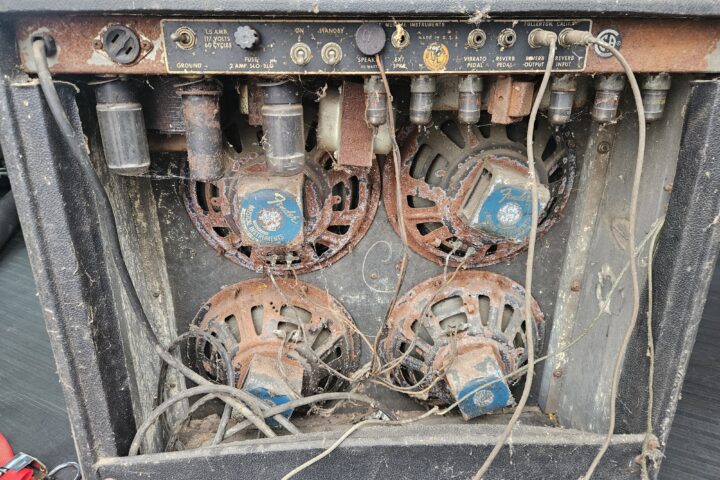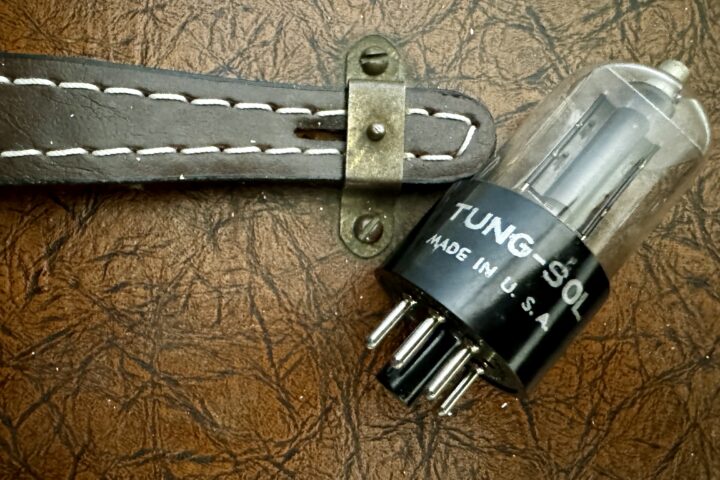I awoke this morning with a plan to sit down and write just for fun, just for me, on any topic I wanted. At the time, I did not know that #worldguitarday was even a thing, and frankly, there seems to be far too many hashtag-friendly days to even keep up with at this point, so I normally don’t participate; a party that never stops is no party at all. Still, it’s a compelling writing prompt, if nothing else.
Inspired by the viral trend of the day, I thought I’d pen love letters to the ones that got away: Guitars that I, for reasons both true and trite, sold off to fund more enduring liaisons. Some were flash-in-the-pan romances, curiosities acquired in service of the question “What if…” while others were chance offerings at a price too good to be believed, suitable for the occasional flip for a tidy profit. The most heartbreaking were the ones I bonded with that fell out of favor over the years, and those are the guitars I still think about when I’m alone at night, wondering what might have been if I’d just kept them.
Here are some guitars I’ve owned that I sort of miss.
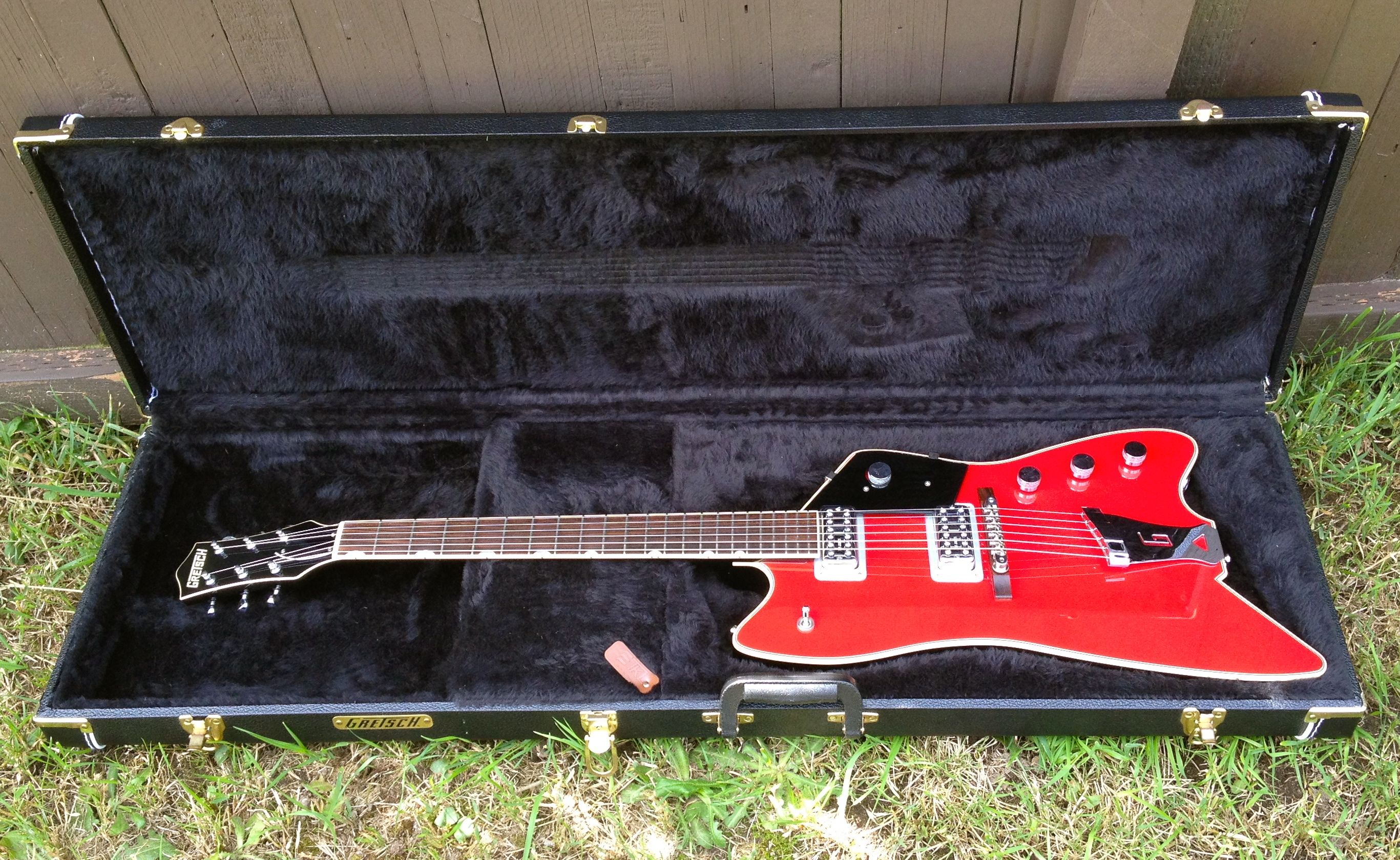
Gretsch Billy-Bo Jupiter Thunderbird
This is one of those classic “me” patterns I’ve lived out far too often. I’ll give you a brief run-down of the story beats:
-Mike meets guitar.
-Mike buys guitar.
-Mike works on guitar.
-Mike prepares to sell guitar for more than he paid.
-Mike accidentally falls in love with guitar.
-Mike sells guitar.
-Mike is devastated. For years.
I picked up this guitar sometime in 2012 shortly before opening Seattle’s Mike & Mike’s Guitar Bar with my friend, Mike Ball. It came to me at a good price from a guy who admitted he just wasn’t playing it due to a couple of issues, so I swooped in with the intent to spruce it up and pass it on.
This was the standard model with the red finish, TV Jones Power’Tron pickups, and “G” tailpiece––nothing fancy but of the same consistent quality that Gretsch presents. I’ve always been a huge fan of this Cadillac-from-Space body shape, and of the Reverend Billy Gibbons himself. I first discovered ZZ Top as a kid via the Back to the Future movie franchise, the second installment of which prominently featured the band’s music, and later, the band themselves in Part III. I credit my love of weird and rare guitars in part to Mr. Gibbons’ flashy style and jaw-dropping collection. Back to the guitar…
The work I performed on the instrument was relatively straightforward; it didn’t need much more than a new bone nut with better string spacing and replacing a bad master volume pot. I also added a treble bleed network to brighten up the very dark pickups as the volume is rolled off. All of this seemed to fix the issues the original owner and I agreed upon, and so I posted it for sale.
In the short time it took to find an owner, I played it. A lot. At first, it was just because it was around, and then I found myself taking it home with me after a long day of guitar repair. And there I was on my couch watching Deep Space Nine, noodling away. Before I knew it, I loved the thing, from the neck shape to the wild look of it all. When it finally did sell, packed in a box and shipped off to some new admirer, I have to admit the money I made didn’t cover up the hole left in my heart. Even to this day, I fruitlessly try to convince myself that I don’t like red that much anyway. I know I’m lying to myself, but it helps.
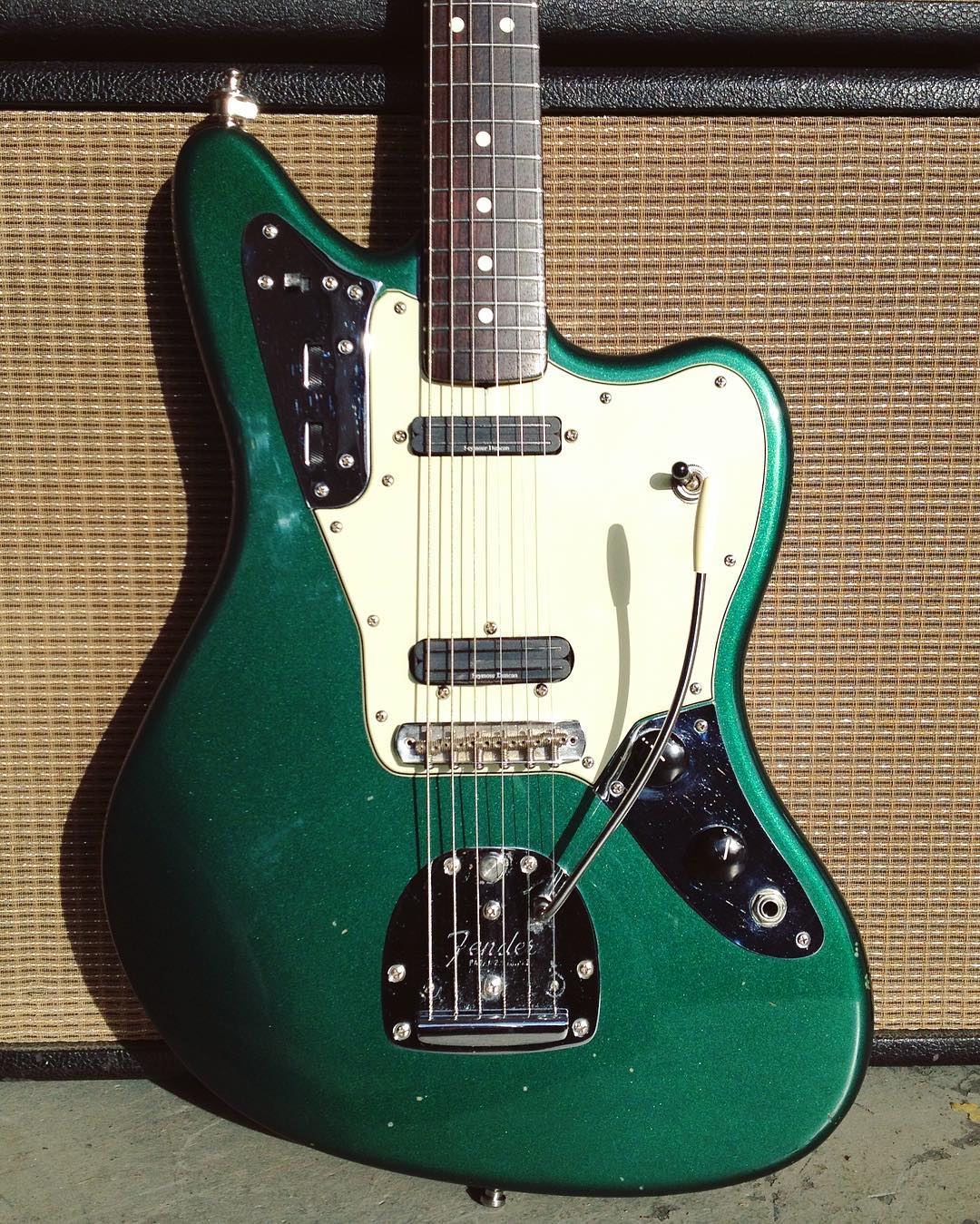
Fender Custom Shop “Smash Mouth” Jaguar
I found this one while surfing Baltimore Craigslist in late 2013, just like I always do before taking a trip back East to see my folks. The rule for me is that trips aren’t worth it unless I buy something that I can later re-sell to pay for the plane tickets. And so, there I was on the ‘List searching for my usual gets: Jaguars and Jazzmasters. At the time, they didn’t seem to pop up all that often in that area, so my hopes weren’t exactly high.
To my surprise, a listing popped up for a Fender Custom Shop Jaguar from 2001 in a deep Sherwood Green Metallic. Rare enough as they are, what made this CS Jag even more special was the fact that it was made for Greg Camp of the band Smash Mouth. You know, “Walking on the Sun,” “All Star,” the Shrek soundtrack…
This guitar had its COA, original case, and was in pretty great shape considering it had been toured, showing only minor finish imperfections and barely any fret wear. Even more exciting was its completely non-standard pickup complement of two Seymour Duncan Hot Rails. Gone was the three-switch control plate, replaced by a lone toggle, and only the Lead circuit was hooked up; the Rhythm controls were just for show.
Before I slapped down wad of cash and left the shop where I bought it, I usurped the tech bench there to throw on a Mastery and a set of DR 11s. I played it a few days later at Josh & Holly’s Wedding; I sat in at a church I used to attend; I brought it back to Seattle with me and played the hell out of it for a few months and got a huge kick out of its sound and story; I laughed along as my friends bragged about their buddy with the Smash Mouth guitar.
At some point, I shrugged and decided I could use the money instead for I don’t know what reason, and decided it was for sale. It eventually went to a frequent customer of ours who asked me to spec it out like a Johnny Marr model with a four-way blade switch and some Lollar pickups. It sounded great, but I felt uneasy about changing the essence of it. At the end of it all, I was down a green Jaguar but finally paid for those plane tickets. I should have just eaten that air travel expense and kept a very cool guitar, but hindsight is 20/20.
As luck would have it, the Smash Mouth Jag is back on the market. I just can’t go backward emotionally or financially, but I’ll be happy enough to see it in someone else’s hands.
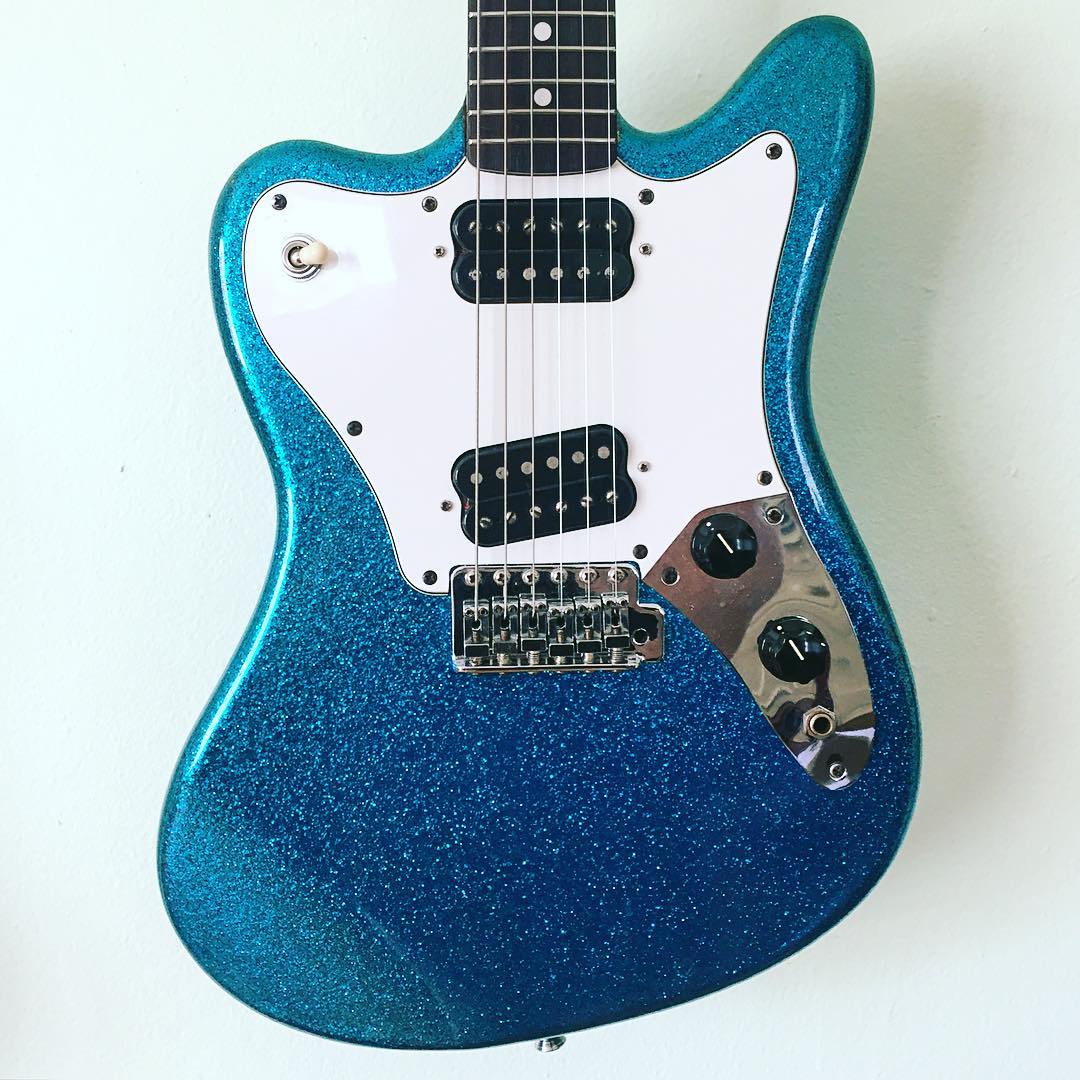
Squier Vista Series Super-Sonic
I have owned two of these guitars over the years, and both times my obsession with the model’s sparkle finish and turned-around looks eclipsed my better judgment. It didn’t matter how many times I reminded myself, “Hey, you don’t really like Strat vibratos,” or “Remember how it hangs on a strap?” I had to have it.
I first discovered this guitar during my high school years, when I’d often waste time at the local mom & pop shop. There were guitars to play, but more importantly, there were catalogues from companies brimming with stranger fare than was customary in a small rural Pennsylvania music store. I wouldn’t actually play one until I found one in another state on Craigslist in 2013. When it arrived at my door, I was elated. I finally had one of my dream guitars.
The trouble is that a few weeks would pass and I’d just end up staring at it. They’re excellent guitars, don’t get me wrong! I’ve praised them plenty in the past. The sad truth of the matter is that at some point, I must accept that these wonderful instruments are just not for me. I love the finish, I love the headstock, I’m even cool with the pickups these days. It’s how they hang on a strap that ruins the fun for me. The position of the strap button causes the bridge to sit farther over toward my left arm than is comfortable for my comically wide body, an issue that I can’t ignore once the honeymoon is over.
In both instances, I’ve bought these dream guitars for great prices, gotten way too excited, and then a month or so down the line, I pass them on. The second, back to its original owner, the incredibly talented Vanessa Wheeler, aka Vavá.
The dream is dead.

1965 Fender Jaguar Inca Silver (Refinished)
There’s not much to say about this one, honestly. Purchased from an older gentleman who owned Jaguars from every year of production and was kind enough to pass one on to me. It was from 1965 with a bound dot neck, refinished in Inca Silver with some parts replaced. At the time, it felt like a great score, but the relationship soured.
No mincing words here: I hated this guitar. You know when you first meet someone and you know within seconds that you are NOT going to be best buds? This is the guitar version of that. It’s still surreal to me how quickly I came to loath this particular instrument. It wasn’t a “bad” guitar by any stretch, quite the contrary as I was told so by a number of people who played it. The neck shape was fine, the sound was fine, it looked fine, the weight was fine… There was nothing wrong with this one but within the space of two weeks, I wanted it gone.
It quickly sold to Arcade Fire and a few months later, I saw it on TV. Clearly Win Butler liked it a lot more than I did which puts my mind at ease, but not so much as getting my money (and then some) back out of it. Oddly enough, I can’t even find pictures of it, not in my hard drive or my various social media channels, which probably says something about my disdain for the thing. I’m sure I posted about it, but I just can’t be bothered to spend the effort to find it.
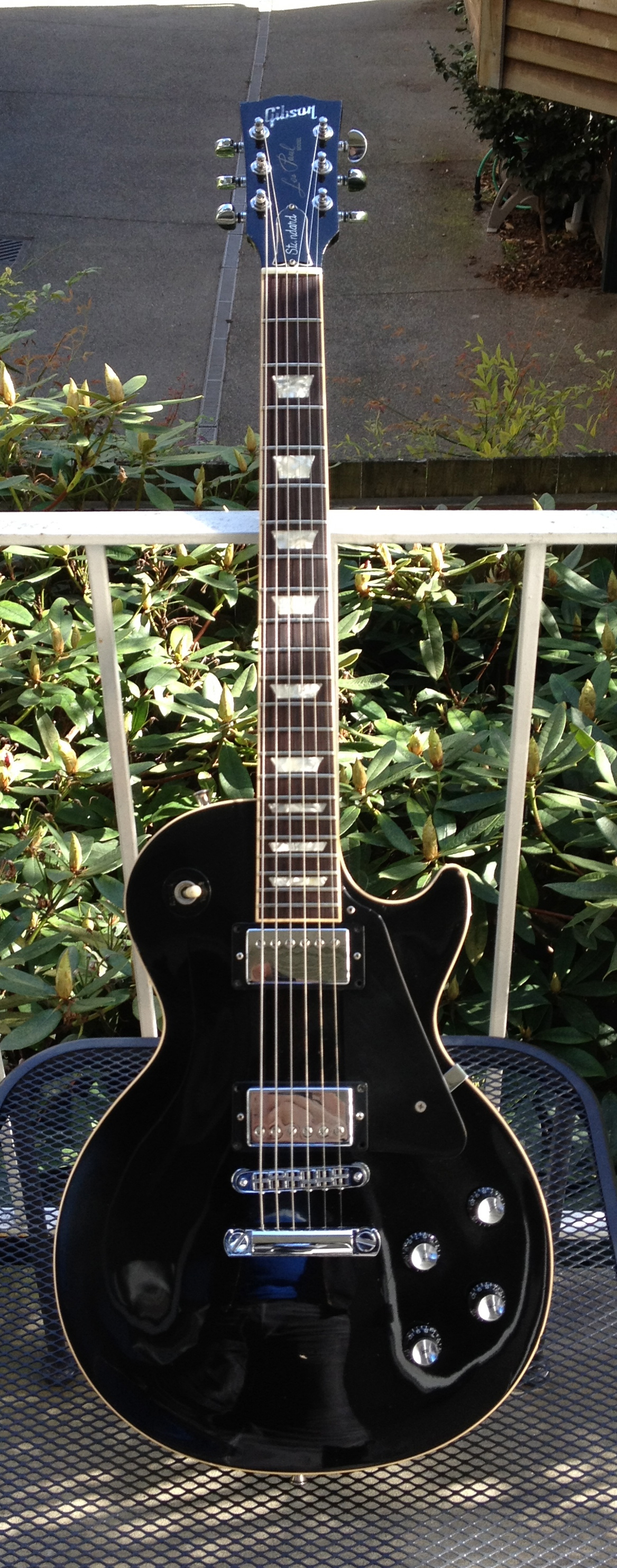
1999 Gibson Les Paul Standard “Beverly”
This ebony Les Paul was my first good guitar, bought by my parents as a graduation gift. I remember the day we brought it home to York, Pennsylvania from just over the Maryland border. I sat with it in the back seat, case open, losing myself in the smooth inky blackness of the body. At the time, it was the coolest guitar I’d ever seen, let alone owned. And the sound, my god, what a sound! This was my only electric guitar from then until 2007, and for some reason I named it after Dr. Beverly Crusher from Star Trek: The Next Generation. I couldn’t say why, though.
That guitar went with me everywhere: on tours with a regionally popular band that was equal parts Jimmy Eat World and Thin Lizzy, to college in California, across the pond when I lived in Prague, and then to Seattle where I got married and made a life for myself. When I discovered the joy of offset guitars in 2010, the guitar still got played but was mostly kept in its case, taken out only when I needed something louder. When I eventually decided to sell it off, it wasn’t the sound or the look or the performance that caused me grief, it was the weight. I just couldn’t wear a 10.5 pound guitar any longer.
I said my goodbyes as it was packed and shipped off to Alaska. I sometimes wonder how it’s doing, what configuration it’s in, what music it’s making. I also wonder if I’d buy it back if it ever came up for sale, but I’m honestly not sure. Like the Super-Sonics, would I be buying it just to capture it but not to play? Or would I make peace with my back pain and sling it around my shoulders once more? Doubtful, but I suppose I won’t really know until it happens.
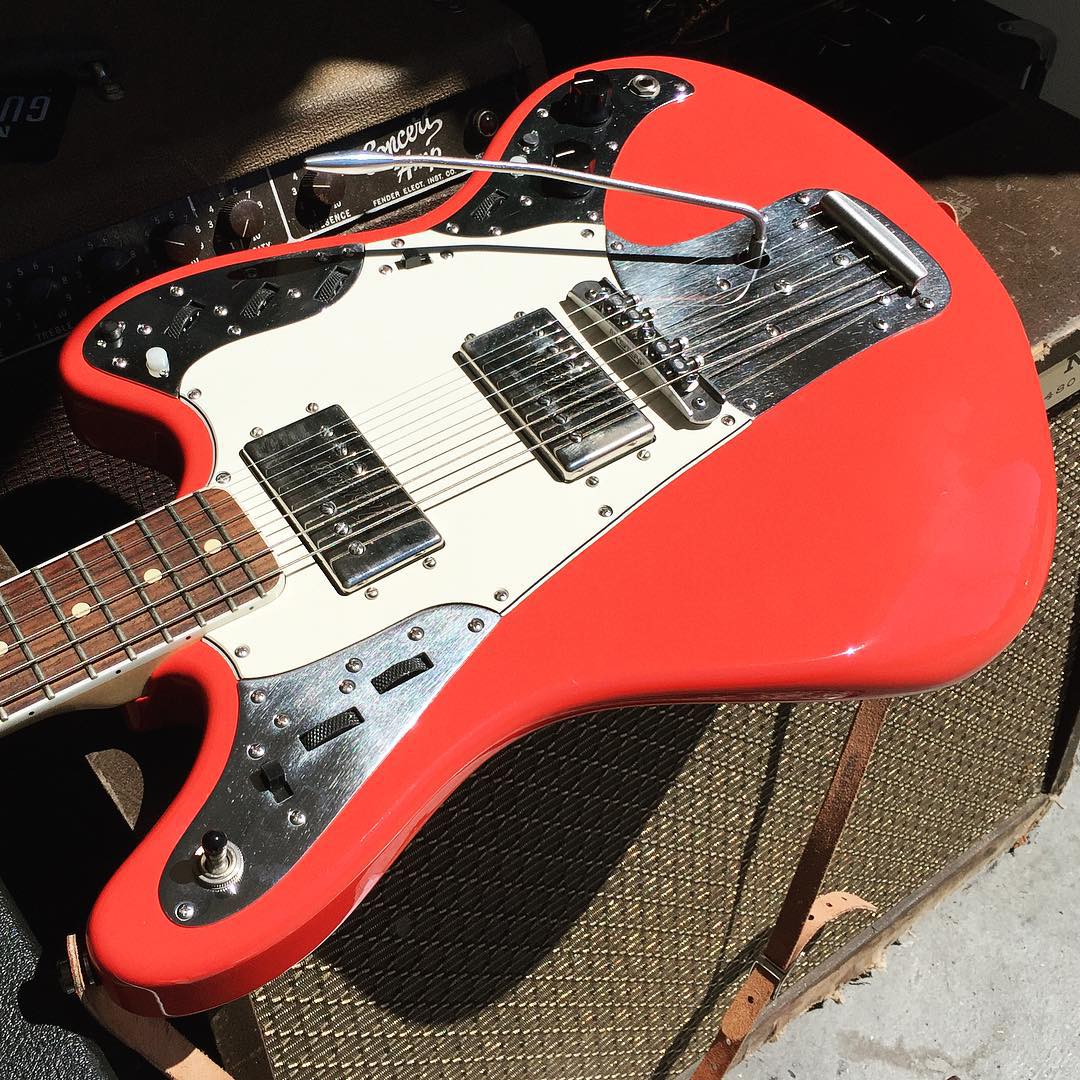
BIlT Relevator
I’ve long held the belief that BilT Guitars out of Des Moines, Iowa are building some of the most exciting and solid instruments in the boutique game. The attention to detail and commitment to stranger designs and ideas keeps their work fresh and exciting while playability is effortless from the workshop. I’m an especially big fan of the Relevator models with built-in Fuzz and Delay.
When I had the opportunity to finally own one, my mind was opened to new musical possibilities. Having a Fuzz pedal at the push of a control plate button was nothing short of revolutionary for me, lending itself to manipulation in the same simple hand motion as adjusting the guitar’s volume control. The weight wasn’t bad either, surprisingly lighter than the Les Paul mentioned above! And that headstock gets me every time, especially with its flashy white stripe against its matched Fiesta Red finish. It even had my favorite Lollar pickups––those Regals are tough to beat.
I’m sure that my decision to sell was motivated by another purchase, or maybe the allure of having some extra cash in case something popped up. Perhaps I thought of this as an experiment, maybe if I owned one I’d ‘get it’ and then decide I didn’t need another. I don’t really recollect, but whatever it was, it wasn’t worth it. Of all of the long-lost loves I’ve waxed on about here, this one may be what I miss the most.
When it comes to selling guitars, it always makes sense at the time. If I can make back some money or trade for something else I’m usually happy, even if it stings a little. I’ll be fine as long as I can stave off nostalgia, but some pieces just get under your skin.
I can live without a Billy-Bo, I didn’t really get on with the first Super-Sonic and I don’t miss the second, and I can even forgive myself for offloading that truck of a Les Paul. It’s never the ones I’m supposed to like that haunt me. The ones that inspire me, that make me excited to play again – those are the ones worth holding on to. Someday, I’ll learn my lesson.
Michael James Adams is the editor of the Fretboard Journal Electric Guitar Annual, which has just begun mailing worldwide. If you want to dig even deeper into guitars that got away, check out our friend Jaimie Muehlhausen‘s site, The Ones That Got Away.

